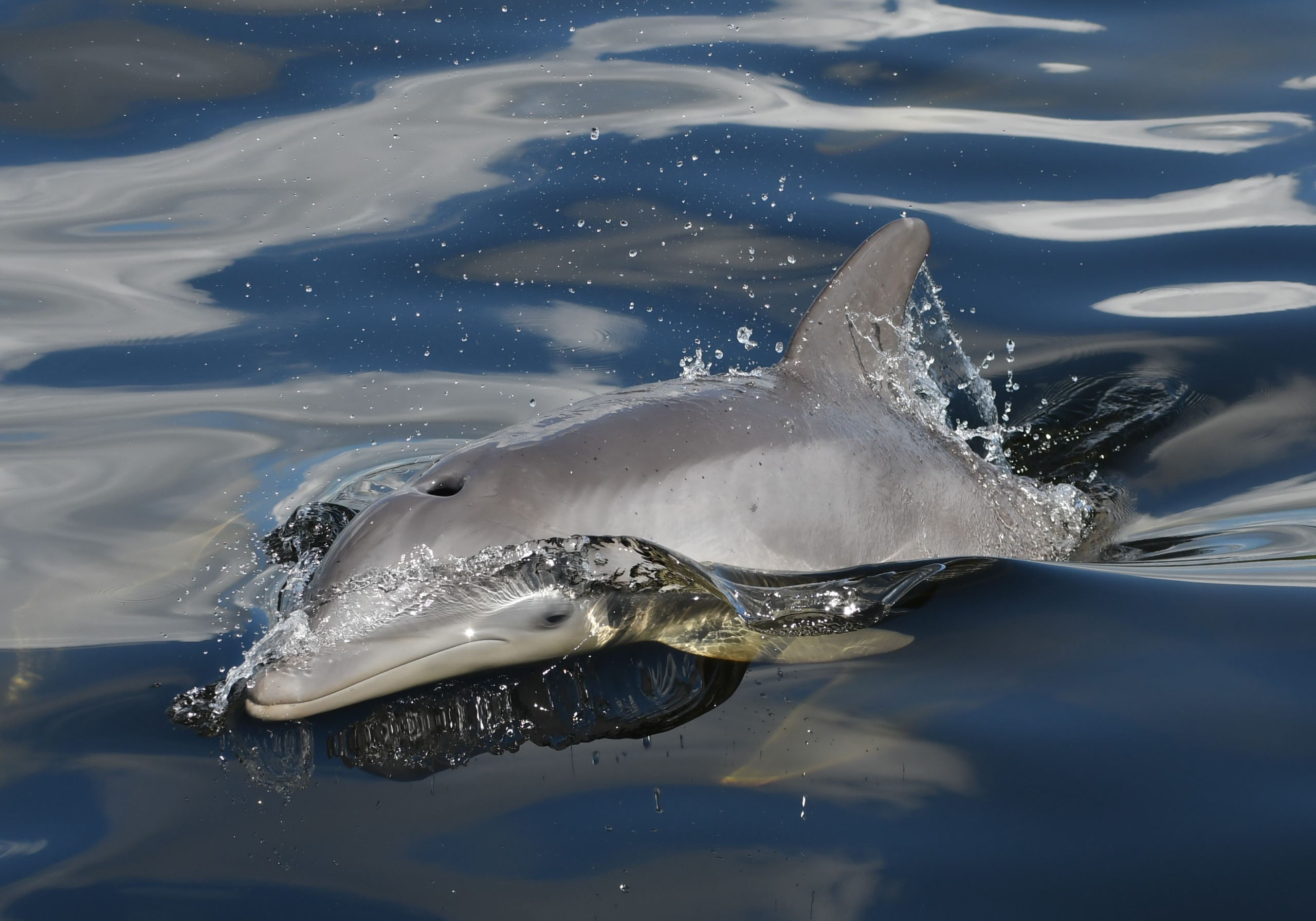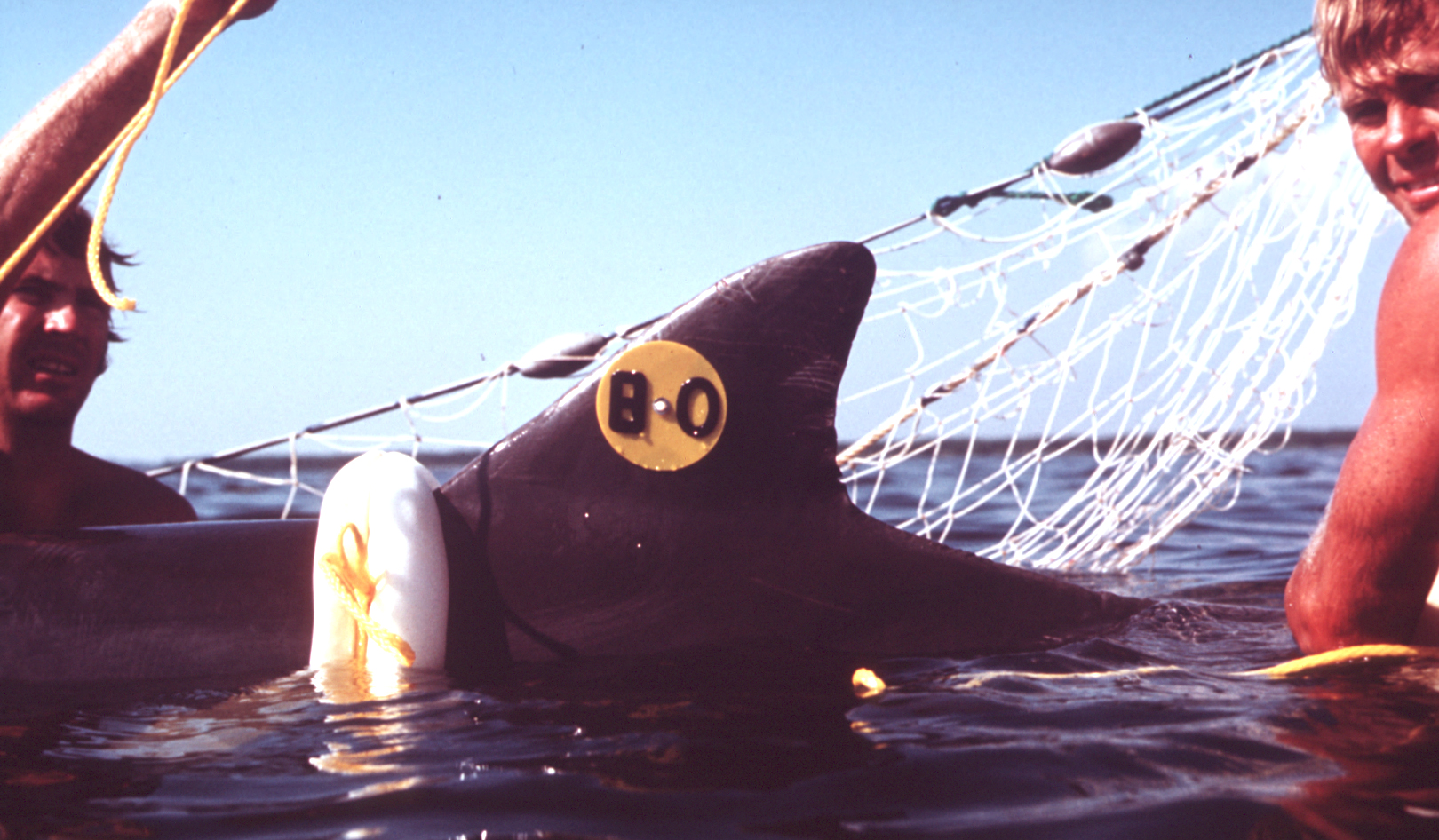Our Approach to Helping Dolphins

Our desire with each research or conservation project in Florida or elsewhere is to contribute to a better understanding of the structure and dynamics of populations of small cetaceans — dolphins, whales, and porpoises — as well as the natural and anthropogenic factors (factors of human origin) that impact them. We use an interdisciplinary and collaborative approach as we conduct studies of bottlenose dolphins within our main study area — Sarasota Bay, a unique long-term natural laboratory.
Our primary goals include:
- Collecting biological, behavioral, ecological, and health data important to the conservation of small cetaceans, especially bottlenose dolphins;
- Providing wildlife management agencies with the requisite information need for bottlenose dolphin conservation;
- Disseminating the information we generate to scientific and general audiences to aid dolphin conservation;
- Using our model program to develop and refine hypotheses regarding bottlenose dolphins in other parts of the species’ range as well as other species of small cetaceans in other parts of the world;
- Using the established natural laboratory of Sarasota Bay to develop and test new research tools and methodologies of potential benefit to conservation efforts;
- Training cetacean conservation workers and students from around the world in the use of these techniques;
- Applying our unique expertise to dolphin rescue operations and post-release follow-up monitoring;
- Applying the information we gather from free-ranging dolphins to improve the quality of care for dolphins in zoological park settings.
The collaborative work done toward achieving these goals is conducted under the umbrella of the “Sarasota Dolphin Research Program.” This name links the efforts of several organizations and individuals that work together to insure the continuity of the long-term dolphin research in Sarasota Bay. The SDRP has been operated by Brookfield Zoo Chicago (formerly the Chicago Zoological Society) since 1989. Dolphin Biology Research Institute, a Sarasota-based 501(c)3 nonprofit corporation was established in 1982 to provide logistical support through its fleet of small research vessels, vehicles, computers, cameras, field equipment, etc. Since 1992, the program has been based at Mote Marine Laboratory, with office, lab, storage and dock space within the resident Sarasota Bay dolphins’ home range. The SDRP maintains academic connections including providing graduate student opportunities primarily through the University of Florida, the University of California at Santa Cruz, and Duke University.
All of our dolphin research in the United States is conducted under NOAA’s National Marine Fisheries Service Scientific Research Permit No. 26622 and Institutional Animal Care and Use Committee approvals through the appropriate institutions.
Our History

Scientific studies that provide information about the ranging patterns of dolphin populations are important to establish conservation strategies. The Chicago Zoological Society’s Sarasota Dolphin Research Program is the world’s longest-running study of a wild dolphin population. It was initiated in 1970 to study the movements of dolphins in the inshore waters near Sarasota, Florida, and it was the first project to identify long-term residency by a dolphin population, based on observations of multiple generations of related dolphins residing year-round in local waters over decades.
The predictability of finding resident dolphins of known backgrounds set the stage for research on their biology, behavior, ecology, health and the impacts of humans. Research approaches developed or refined in Sarasota Bay have helped us to learn about dolphins in other marine areas throughout the world, including Bermuda, Cambodia, Argentina, China, Greece and other locales.
The Program’s Director, Dr. Randall Wells, was a 16-year-old volunteer intern for the program when its leader Blair Irvine began dolphin studies in Sarasota Bay. Wells has been working to improve the knowledge and conservation about dolphins ever since.
From the Founders
Dr. Blair Irvine began his career as a dolphin trainer for the U.S. Navy, work that eventually took him to Mote Marine Laboratory in Sarasota, Florida, where he began investigating the behavioral interactions between sharks and dolphins. His interest in the behavior of wild dolphins led him to start the research in 1970 that would eventually become the Chicago Zoological Society’s Sarasota Dolphin Research Program, today known as the world’s longest-running study of a wild dolphin population. In an essay published in the journal Aquatic Mammals, Dr. Irvine shares his experiences about his early days of dolphin training, and his memories about some of the earliest pioneers of marine mammalogy.
Dr. Randy Wells was a high schooler with an interest in sharks when his family moved to Sarasota and he began working with Irvine on the dolphin-shark studies. Today, as the Program’s leader, he reflects on its history: “The Sarasota Dolphin Research Program is so far beyond anything that I could have imagined when I was 16 and helping Blair Irvine begin tagging dolphins in Sarasota Bay in 1970. We had no idea of the complex lives that dolphins live or that these initial studies and findings would result in a pioneering model for dolphin research and conservation that is used worldwide today.”




